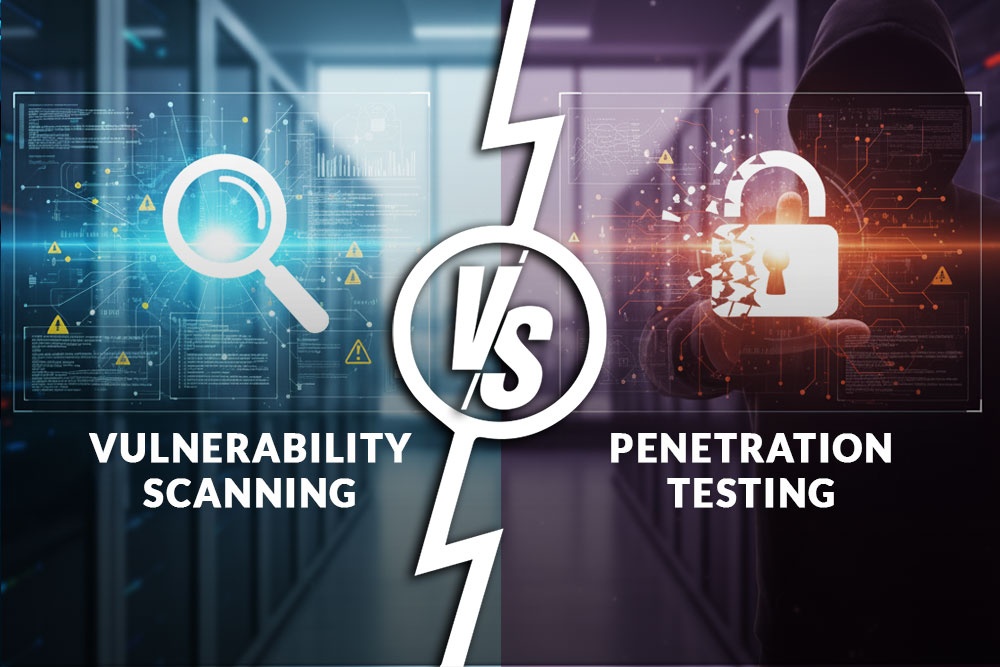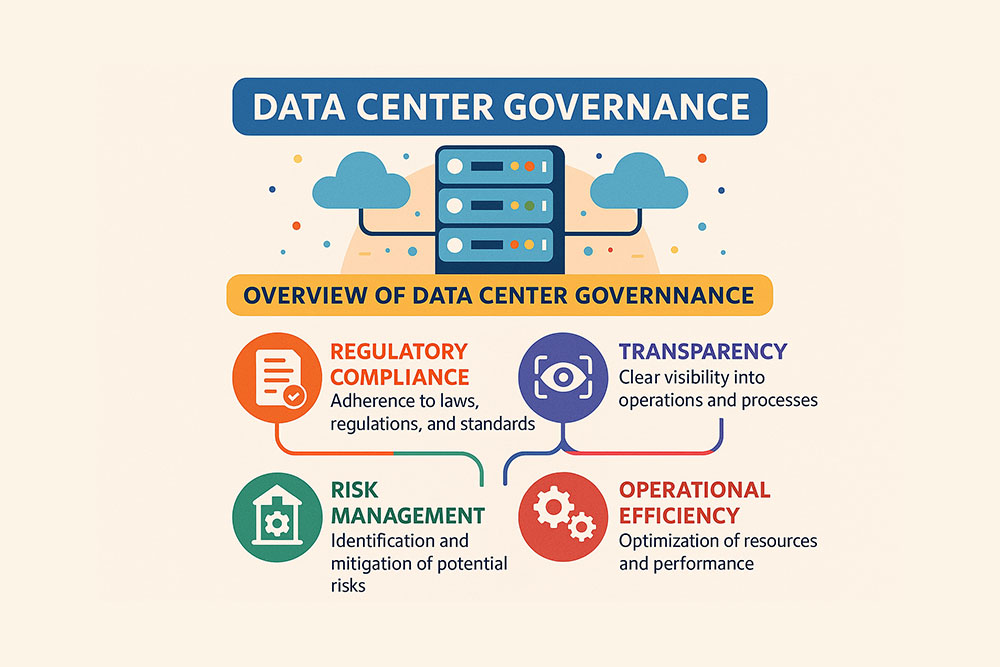The data center industry has seen significant growth in the last few years. Data volumes have increased dramatically, asking for better storage and processing. Data centers and AI have started to merge, requiring significant transformations worldwide. For many operators, implementing data center automation was a key solution to improve operational efficiency and maintain the quality of their services.
Conventional data center management requires a significant amount of manual work. This often means that the same data has to be introduced into several different systems, requiring a lot of time and leading to errors linked to the human factor. Data centers now widely use automation to simplify this and reduce the risk of mistakes. Data center automation implements the latest technologies to improve operational efficiency with less human intervention. This framework allows better control of hardware, software, and networking components, operating systems, and data storage.
This blog will explore the benefits of data center automation in streamlining operations and reducing the risk of errors. Let’s get right to it.
Simplifying Tasks With Data Center Automation
The gist of data center automation is to reduce the need for manual work to a minimum, as manual interventions are often the source of errors and also require more time and resources. According to the Uptime Institute, human error is linked to approximately 66% to 80% of all downtime incidents.
By definition, data center automation is a set of hardware and software solutions implemented to streamline tasks and simplify processes in the data center. Today, AI and machine learning facilitate many of these solutions, allowing organizations to improve in areas like productivity and resource utilization, and achieve better performance.
Data center automation uses DCIM software to replace repetitive manual work that can easily lead to errors. This encompasses automating processes like performance monitoring, infrastructure provisioning, incident response, and capacity management. This allows organizations to save time and valuable resources while also ensuring that the tasks are executed with less room for mistakes, which could lead to downtime.

Main Benefits of Data Center Automation
Let’s take a closer look at the main improvements that come with implementing data center automation.
Better Efficiency
Data center automation can significantly boost efficiency by streamlining server provisioning, monitoring, and maintenance tasks. Automated DCIM software systems reduce the need for manual intervention based on assumptions, allowing to get more utilization out of the existing resources. This cuts down on human error risks and frees up IT staff to focus on more important work. This leads to improved resource utilization, faster response times, and better general efficiency in the data center facility.
Improved Incident Response
DCIM, or Data Center Infrastructure Management software automation, improves incident response by providing real-time monitoring alerts. Automation facilitates the quick detection of anomalies and potential issues, allowing teams to act promptly and prevent problems from exploding and affecting service quality. Detailed analytics and insights help identify root causes faster, enabling quicker resolutions.
Lower Costs
Minimizing the need for manual labor lowers the risk of human errors and optimizes resource usage. Automating routine tasks like provisioning, maintenance, and monitoring allows organizations to enhance efficiency and improve energy management. These can significantly save on labor, maintenance, and energy expenses, reducing costs in the long run.
Easier Scalability
Thanks to efficient provisioning and orchestration, data center automation allows better scalability by enabling faster deployment and configuration of new infrastructures. Automated systems quickly adjust to changing demands, efficiently handling increased workloads without additional manual intervention. This allows smooth and scalable operations as businesses grow, ensuring organizations can cope efficiently with fluctuating demand.
Improved Reliability
Automation can help prevent downtime and ensure high availability of critical applications and services. This is possible thanks to the continuous monitoring of performance and system health to ensure that issues are addressed promptly. Automated failover and self-healing can further bolster resilience and significantly reduce the negative effects of network outages and hardware failures.
Stronger Security and Compliance
Consistent application of security policies, automatic vulnerability scanning and patching, and updates – these are the main tasks by which data center automation contributes to greater security. Automation enables fast response to security threats and strengthens consistent security policies and configurations throughout the data center environment. Automation can also provide additional benefits with access control systems, maintaining accurate audit trails and helping organizations meet compliance requirements.
Lower Risk of Downtime
Data center automation can send alerts of potential issues before they turn into bigger issues that can cause downtime. This happens by implementing power meters and environment sensors that can then report on temperature, humidity, power loads, three-phase balance, and other metrics that can notify you of changes and anomalies that can later lead to downtime. With the help of automation, it’s easier to identify and solve potential issues, as well as prevent unplanned downtime.

Getting Started With Automation
Implementing data center automation requires some planning and, to be successful, a certain degree of human supervision. Here are some best practices that help prepare for and benefit the most from data center automation.
Planning, Infrastructure Assessment, and Defining Objectives
Identifying the specific goals you aim to achieve with automation is a good place to start. It can be reducing costs, increasing operational efficiency, or enhancing security, for example. Then, assess the current state of your data center to determine the tools, technologies, and resources necessary for implementation and the areas where automation could bring the best results. Planning also includes defining objectives and success criteria, and documentation of infrastructures, workflows, and processes. These are crucial steps in developing a good automation strategy.
Select the Right Tools and Technologies
Choose automation tools and platforms that are compatible with your existing infrastructure, and meet your specific needs. Look for solutions that can offer flexibility, scalability, and easy integration with other systems and applications. With the right tools and solutions, automation can offer long-term sustainability and operational efficiency.
Implement and Test in Stages
Avoid implementing automation in the entire data center all at once. It’s a safer strategy to start with low-risk tasks and expand gradually to get used to the technology and avoid mistakes. At each stage, conduct rigorous testing to identify and resolve issues to ensure that the automation is successful and functions efficiently. This helps identify and correct any potential inefficiencies before scaling up.
Monitoring and Optimization
Regular checkups and monitoring automation workflows help identify and tackle potential issues and inefficiencies and make adjustments as needed. Key performance indicators (KPI) can measure error rates, deployment time, and resource use, helping you to ensure proficiency. Optimization can also happen through fostering a culture of training and improvement, where a well-informed staff can recognize and implement new ways to benefit from automation opportunities.
Conclusion
As AI and data centers merge to adapt to the challenges of the new paradigm changing the industry, data center automation has become a top priority. Modern automation systems can save your organization time and make a massive difference in improving operational efficiency in data centers. Implementing automation can save costs, improve incident response, allow easier scaling, and improve security and reliability. By following a few best practices, your organization can easily and efficiently implement automation and focus more efforts on core objectives while maintaining a competitive edge.










